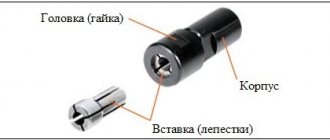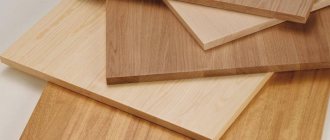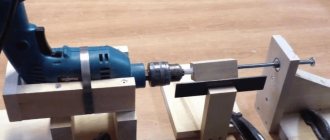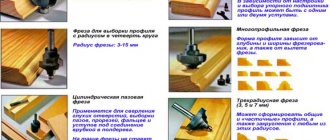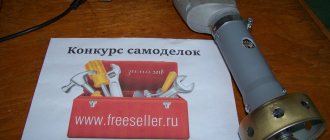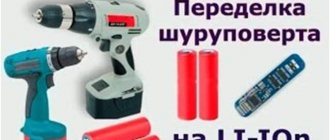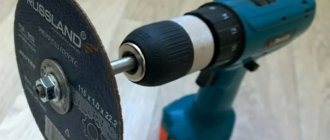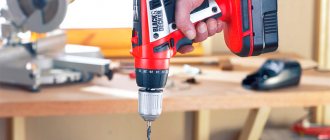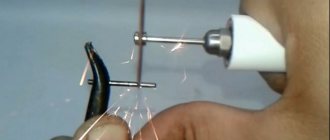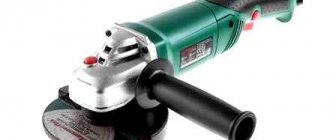A flexible shaft, the main purpose of which is to transmit torque over a considerable distance, is most often used to equip engravers. This type of equipment, which is essentially a miniature grinding machine, is actively used for processing small-sized parts. In particular, the engraver is used as a mini-drill; it is used to perform miniature cutting, selective grinding of small elements of products and a whole list of other works.
The flexible shaft simplifies the use of the engraver, eliminating the need to hold the tool above the work site
The most common areas where flexible shaft engravers are used are the jewelry and electronics industries. Such equipment is actively used by design specialists, employees of car repair stations and workshops involved in the repair of household appliances and electronic equipment.
An electric engraver, on which a flexible drive is installed, is especially relevant in situations where processing must be performed in hard-to-reach areas of the product. Using replaceable attachments, such equipment can be used in all stages of processing, from roughing to finishing.
Flexible engraver shaft with protective springs at the ends that protect the rubber casing from damage
What operations are performed using an engraver with a flexible drive?
Special attachments help turn an engraver with a flexible shaft installed on it into a truly universal device, which include:
- grinding and polishing wheels, allowing you to bring the surface of the workpiece to a perfectly smooth state;
- brushes used for cleaning the surface of the product and polishing it in hard-to-reach places;
- cutting wheels for cutting products and processing their torn edges;
- drills, with the help of which the device turns into a miniature drill;
- cutters and abrasive wheels that allow processing of products in hard-to-reach places;
- pen-shaped attachments used for engraving work.
To ensure ease of operation with such a device equipped with a flexible drive shaft, you can purchase additional accessories - rubber grips on the handle, a power button lock, etc.
All kinds of holders are very useful, in which, in addition to the shaft and the engraver, you can attach various attachments
Engravers on which a flexible drive shaft is installed also include a drill used in dentistry, a manicure machine, equipment for processing natural stone and applying inscriptions and drawings to the surface of products made from it.
You can also use a flexible shaft for a drill or purchase a flexible shaft for a screwdriver. With this improvement to conventional power tools, a screwdriver attachment or drill can be successfully used to perform work even in the most difficult to reach places.
Assembling the internal part of the engraver mechanism
Having sawed off the screw along the edge of the thread, we screw the Mayevsky tap onto it and put on the first bearing almost all the way, holding the sleeve in a vice. Next, the tube is put on, and then the second bearing fixes it. The inside of the drill is ready.
We put bearings and a tube on the shaft PHOTO: youtube.com
Working with a spray foam gun
This tool only requires an outer long tube. You need to cut off a section from it, the length of the finished inner part without the Mayevsky tap, adding 2 cm. This will be the shell, which will serve as the handle of the engraver.
How does the engraver work and how does it work?
The engraver, which allows you to process parts with high precision and productivity, works on the principle of a conventional drill, and in appearance it is very similar to a large automatic pen. The main structural elements of such a device are:
- engine;
- a flexible drive shaft that transmits torque from the engine to the working attachment;
- gearbox;
- a fan used to cool the spindle;
- the spindle itself with a protruding working part;
- device body with special openings for the exit of heated air;
- a nut designed to fix the used nozzles;
- device power regulator;
- lock button;
- power switch;
- hook for hanging the switched off device.
Engraver device
Rotation from the engine is transmitted to the axis of the flexible shaft, the reverse side of which is connected to the working nozzle. The mounting locations of the nozzles are unified, so there are no problems with choosing the required tool and replacing it.
Briefly about the manufacture of cutting cutters
It is quite simple to make such consumables, and therefore it will be more convenient to show it exclusively with photographic examples.
When the cutter is ready, it can be installed in the engraver by tightening the collet chuck with keys PHOTO: youtube.com
Equipment selection criteria
When choosing an engraver, you should focus on a number of characteristics.
Power
Based on the power level of the device, on which its performance directly depends, one can indirectly judge the operating life of the drive motor. The power of the engraver, which for serial models can be in the range of 35–300 W, should be selected based on the tasks for which it is planned to use such equipment. In addition, you need to consider how long it will work between turning on and off. The duration of the operating process depends on the hardness of the material from which the product being processed is made. The longer the engraver is used at one time, the more power it should have.
The low-power compact engraver is suitable for simple work without a flexible drive
Number of revolutions
The speed at which the electric motor shaft and the flexible drive shaft attached to it rotate is also selected depending on the hardness of the materials that need to be processed using the engraver. Models offered on the modern market can provide tool rotation speeds in the range of 10–35 thousand rpm. Low-speed models can be purchased if they will be used primarily for finishing grinding and polishing. When performing such operations, a small load is placed on the tool, so the engraver itself does not overheat, and therefore does not fail.
If you need a more universal device with a flexible shaft, it is better to give preference to engravers that provide the ability to adjust the rotation speed of the tool.
The speed controller significantly increases the functionality of the engraver.
Dimensions and weight
The weight and dimensions of the engraver affect how convenient and easy it will be to manipulate such a device during processing with its help. Engravers that have significant dimensions and weight are much more difficult to work with, but such devices, as a rule, have higher power and productivity. The weight of an engraver with a flexible drive shaft can be in the range of 0.5–8.5 kg. When choosing such a device, first of all take into account the required power and functionality, and only then pay attention to the weight and dimensions.
Ergonomics
Since an engraver works by constantly holding such a device in his hands, its ergonomics, which characterizes the ease of working with the equipment, is an important factor when choosing. When assessing the ergonomics of a device, you should pay attention not only to its design, but also to the build quality, manufacturing materials, button placement and comfortable handle design.
Before purchasing a tool, you should hold the engraver in your hands, test the activation of buttons and latches
Level of noise, vibration and heating
These parameters are not indicated in the equipment passport. It is advisable to pay attention to them if the engraver will be used quite often. To evaluate how much noise and vibration the device makes during operation, you just need to turn it on and evaluate these parameters. As a rule, medium-power engravers make more noise, and in more high-speed equipment this problem is provided for by the manufacturers and is eliminated by including special elements in the design. You can only estimate how hot an engraver equipped with a flexible drive shaft gets during operation.
Summarize
The work of making a hand-held electric engraver from a drill with your own hands is not too simple. However, if a home master nevertheless decides to take it up and completes it, then he will receive a unique tool that will always be useful. It is unlikely that such a device will remain idle. And if you compare the cost of such a factory-made product, then the importance of such an engraver in your eyes will increase significantly.
And this is the work he successfully does PHOTO: youtube.com
We hope that the information we provide today will not leave any home master indifferent. If you have any questions on the topic, ask them in the comments below. Our editors will definitely answer them.
Source
Flexible shaft design
A flexible shaft for an engraver or any other equipment whose torsional rigidity has higher requirements than bending rigidity, as mentioned above, is used to transmit torque to elements that change their spatial position during operation.
The main part of the flexible shaft, which is responsible for the main function of such a device, can be a wire rod or a special cable. This element is made of materials with high torsional rigidity. Additional layers of twisted wire are wound onto the main core of the flexible wire shaft to give it higher rigidity. To ensure safe use of the flexible drive shaft, as well as to protect its surface from damage and retain lubricant on it, this device is placed in a flexible protective shell, which is stationary in relation to the rotating core.
This flexible shaft is equipped with a bit holder on one side and a union nut on the other to secure it to the engraver.
Depending on the design, flexible shafts can be of right or left rotation, which should be taken into account when selecting and using them. Not only the design of flexible shafts can be different, but also their length, sometimes reaching five meters.
The design of the fastener for such a device also depends on where the flexible shaft is installed - on a drill, engraver or screwdriver. Thus, fastening nuts or other types of fastening fittings can be placed at the ends of the shaft.
The tip of this shaft can be removed for cleaning and lubrication, for which there is a hole on the side
Various mechanisms and equipment are driven by flexible shafts of different designs. In addition to engravers, drills and screwdrivers, internal vibrators, brush cutters and many other types of technical devices are equipped with such shafts. The simplest and most familiar option for using a flexible shaft is to clear sewer pipes from internal blockages.
Mechanical car speedometers are also driven by a flexible shaft. Making a flexible shaft with your own hands is, of course, possible, but given the loads under which such a device operates, it is better not to experiment and purchase serial products from trusted manufacturers. You can only be puzzled by the issue of making a flexible shaft yourself if it will be used to drive low-power equipment operating at low speeds.
Preparing parts for the future drill
You should start by making a tube from a long screw. To do this, you need to clamp the drill in a vice (this must be done by the handle; under no circumstances should you clamp it by the body). A bolt without a head is fixed in the chuck, and a Mayevsky tap is screwed onto its threaded side - it will be used as a guide. Afterwards, a drill is selected that fits the tap hole, the drill is turned on and the screw is drilled exactly in the center to the maximum possible length.
Further work requires extreme care. Using two needle files, between which the screw clamped in the drill chuck will rotate, you need to remove the thread so that bearings can be mounted on the resulting sleeve. At the same time, about 6-8 cm of undamaged thread should remain on the side closest to the cartridge - this is very important.
Using needle files, the screw is ground to the required diameter PHOTO: youtube.com
Adapter Types
The angle adapter for screwdriver is divided into two types: flexible and rigid.
Features of the first type include:
- the ability to penetrate the most inaccessible places;
- unscrewing tightly seated screws;
- widespread use in everyday life;
- not suitable for tightening metal screws.
A rigid adapter differs from a flexible one in the following characteristics:
- durable cartridge;
- suitable for professional activities;
- torque: 40-50 Nm.
The structure of these types varies significantly. The flexible one has a metal body, a bit gripper on a magnet, and a flexible shaft. The rigid adapter is made of steel, there are two types of grip, magnetic and cam, there is a bearing.
Do-it-yourself drill for small jobs
The drill has long ceased to be an exclusively professional dental instrument. Today, a drill with a flexible shaft is actively used to perform small decorative work, grinding, polishing, and cutting various products.
At the same time, it should be taken into account that for high-quality work of the homemade product you will need a fairly powerful motor. So, an 18V motor from a screwdriver is perfect for powering drills. The easiest way would be to make an engraver from an old blender.
To make a drill you will need:
- Disconnect the top part of the blender from the working part;
- Using a utility knife, remove the rubber cover on the button and use a screwdriver to unscrew the bolts located under it;
- Using a screwdriver, from the side of the power cable, pry up the top cover of the case and carefully remove it;
- Remove the circuit connected to the power cable from the blender body;
- Remove the plastic part located above the rotator from the housing;
- Remove the plastic tip from the electric motor shaft;
- Measure the diameter of the shaft with a caliper (if you don’t have one, a ruler will also work for this purpose);
- Clean the electric motor housing from oil and degrease its surface using an alcohol wipe;
- Place a collet chuck of the appropriate size onto the shaft;
- Replace the power button with a push mechanism that controls both turning the device on and off;
- Assemble the blender.
Parts for making a drill can be found at a flea market.
The hand drill is ready! Such a tool will be powered via a power cable with a plug. You can power the tool with batteries, but then the batteries will have to be changed or charged from time to time.
Information for fishermen
The angle adapter for a screwdriver is designed not only for tightening screws and self-tapping screws, but is also widely used by fishermen. An ice ax adapter for a screwdriver helps in drilling holes.
Using an attachment that allows you to rotate the ice ax with a screwdriver gives the fishing enthusiast the following advantages:
- simple ice drilling;
- a sufficient number of holes in a short period of time;
- when the screwdriver is discharged, the ice ax can be operated manually;
- slight noise;
- The adapter for an ice ax to a screwdriver is compact and convenient.
The main purpose of the device is to transfer rotations from an electrical device to an ice ax. Most modern adapters are equipped with a special handle for securely holding the tool. Adapters have different designs, the simplest one is a sleeve made of metal. With a more complicated design, the adapter is attached at one end to the auger part of the drill, and at the other to the chuck.
Installing an adapter for an ice ax under a screwdriver is not difficult:
- unscrew the bolt that connects both parts of the drill;
- We mount an adapter in place of the “top” of the drill;
- The hex shank is fixed into the screwdriver chuck.
Some disadvantages of adapters for ice axes for screwdrivers are still present. For long and productive operation of the tool, a powerful charge is required. As a rule, 18-volt screwdrivers with a torque of up to 70 nm are used to drill ice. Unfortunately, not all batteries work properly at low temperatures. It is necessary to take care of additional batteries, which should be kept warm. Fishermen need a more powerful tool, which costs a lot.
The way out of the situation is to use an adapter with a gearbox (a set of gears located in the crankcase is designed to adjust the speed of rotation of the shafts). This element will allow you to use an inexpensive screwdriver for the drilling process. The gearbox will take on part of the load from the chuck and the tool mechanism, and will also help save battery power on the device.
To learn how to make an ice drill adapter for a screwdriver, see the following video.
Let's block ads! (Why?)
Bracket for receiving drilling machine
The multifunctional bracket will help you convert a standard hand drill (corded, with battery) into a stationary drilling machine. The body is made of heavy-duty aluminum alloy. Massive, allows you to securely install the drill for subsequent drilling. The fasteners are designed in such a way that they are suitable for all modern power tools.
The sole is equipped with a vice, which allows you to fix the workpieces in the desired position and avoid their displacement while drilling holes. The adjustable bracket allows you to set the desired height, taking into account the size of the tool itself. For convenient operation, there is a handle with a rubber pad that smoothly lowers the drill.
Multifunctional bracket for drill and screwdriver
| Price | 2,077.21 - 2,345.32 rub. |
| Rating | 4,6 |
| Reviews | 115 |
| Orders | 188 |
| Delivery to Russia | Free |
How to make it yourself
Those who like to make tools with their own hands can easily make a flexible drive for a drill on their own.
Important! You won’t be able to make armor braiding yourself; this requires industrial equipment. It is also important to understand that a homemade flexible shaft for a drill will be inferior to a factory one, first of all, in terms of working life
And it’s better to use it occasionally - then it won’t let you down at a crucial moment. For professional work in large volumes, it is better to invest in a purchased extension cord.
You will have to buy a braided cable in a store and ask them to cut it to the length you need. All that remains for Samodelkin is to cut the ends, mount the outer protection, filling it with lubricants. The shank from a broken drill of a suitable diameter will work as a blank for the mounting unit in the chuck.
As an option, you can take a cable from a car speedometer, as well as a motorcycle gas or clutch control drive as a starting material.
One end of the armored braided wire will need to be welded to the shank of the broken drill using a nut of the appropriate diameter and a welding machine. A drill chuck or a hex adapter is welded to the second end of the cable for quick tool change. Remember that when operating such a drive, you need to hold it not by the rotating cartridge, but by the stationary braid. Such a do-it-yourself device will not only allow you to save money, but also make the drive exactly the length you require. Most factory drives are 25cm or 50cm long.
Purpose and main parameters
A lathe chuck is one of the main elements of technical equipment and is necessary for reliable fastening of workpieces of various sizes and shapes to the spindle. High clamping accuracy ensures centering and perpendicularity of the surface of the processing axis. The chuck is necessary for almost all turning operations; it is included in the mandatory set of equipment for metalworking manual, semi-automatic and automatic machines.
This type of clamp is installed on the headstock of the machine. The transmission of rotation is carried out from the electric motor through the gearbox and transfer case. To ensure the production of parts, several lathe chucks are needed, which are selected taking into account the main operational and technical parameters:
- Design option and number of cams (clamping elements) - determines the possibility of fixing a particular type of workpiece, the location of the cams, and the possibility of installing several workpieces.
- Working diameter of the cartridge. This is the outer size, the diameter of the connecting belt, as well as the location and parameters of the mounting holes.
- Workpiece parameters. It is necessary to take into account the largest and smallest diameters, take into account the method of fastening - external or internal through reverse cams. It is also necessary to take into account the permissible mass of the part.
- The diameter of the hole in the cartridge body. Necessary when processing long rods.
- Maximum value of rotation speed.
